(Mardu Heart-PiercerMardu Heart-Piercer | Art by Karl Kopinski)
The Horde
The Mardu horde of the Khans of Tarkir set is as close a rendering of the Mongol Empire that once dominated the Eurasian continent as we will ever get in Magic: the Gathering. You know, if the Mongols had hunted dragons into extinction.
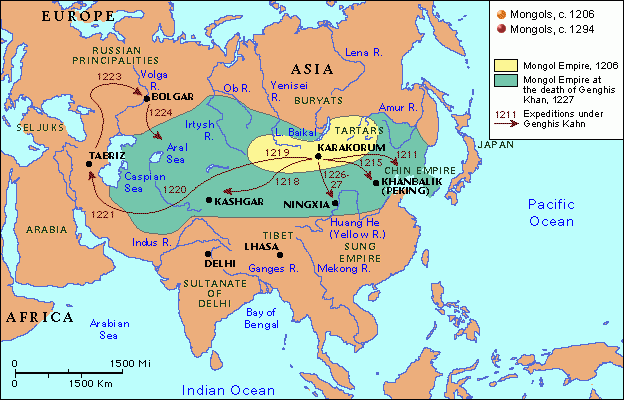
(Credit: Grolier Online Atlas)
Let us start with a quick bit of etymology. The word ‘horde’ is from the Turkic ‘ordu/orda/ordo,’ for 'camp/headquarters,' with the implication of territory or land attached. Later, it would come to mean a geographic or political organization—for example, the Golden Horde ruled Russia.
Hence, the Mardu horde borrows the term 'horde' from the various steppe empires, but the Mongols in particular. The Mardu Horde appears to be a combination of the pre-Empire Mongolia (not holding or administrating territory) and Empire (organized military force based around fanatical devotion to the Khan and conquest).
The Mardu are a ragtag collection of Humans, Orcs, and Goblins that raid to and fro across the expanse of Tarkir. The Mardu tribes are nomadic, relying on speed and shock to disrupt their foes. The most immediately obvious features that the Mardu take from the Mongols are the primacy of the horse, archery, and the transition from a raiding culture into a unified empire under a single leader.
The steppes (whether in our world or in Tarkir) are not a forgiving place, with sudden changes of temperature, violent winds and unpredictable storms. The land is best for grazing animals, not farmland animals, which helps inform how both the Mardu and the Mongols traverse their respective plains. According Mongol historian John Man, “The animal that allowed the Mongols ultimately to conquer the steppes was the horse, that indispensable adjunct of those centaurs of the plains, as has been well said, a Mongol without a horse is like a bird without a wing.”
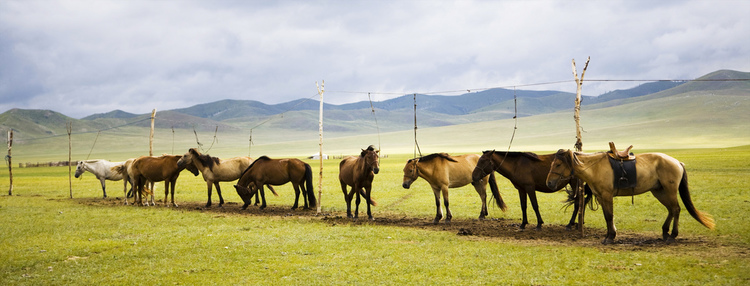
You wouldn't know it to look at them but these are half of a weapon-delivery system that peaked in the 12th-15th centuries on the Eurasian continent
John Man continues, saying: “They [the Mongols] reckoned that each person needed five horses to live well, which meant a family of five would need twenty-five riding horses and four to six pack horses. A ger that had more than ten horses was considered rich.”
In Mongolian culture, there are five noble animals: the goat, the sheep, the camel, the ox, and the horse. The horse is esteemed the most, even now, as a key part of the Mongol national identity. To provide a frame of reference for this, the standard age a Mongol child in the 13th century would be strapped to a horse to learn how to ride was around three years old.
A keen-eyed player can spot similar veneration for the horse with Tarkir's Mardu clans. They live in a fantasy world, and are seen atop everything from giant wolves to war rhinos from time to time, but the core unit is the horse, for both subsistence and military exercise.
Unlike the Mongols, the Mardu have infantry units, something the majority of Mongols at the height of their empire would have scorned. If the Mongols used infantry, it tended to be levies or professional armies raised from the cities and states they conquered. Don't look askance at me; no Mongol leader would dare fight on foot like Zurgo HelmsmasherZurgo Helmsmasher does unless they had literally no other choice in the exigencies of combat. Zurgo Helmsmasher is an infantry Orc.
Speaking of military technology, let us move on to the other half of the traditional steppe weapon system: the bow. Both boys and girls learned how to use the horse and bow from an early age. The weapon was chiefly made of bone or wood and backed by sinew. It possessed remarkable stopping power and was the chief steppe weapon for hunting, self-defense, and warfare.
Don’t just take my word for it; let's ask John of Plano Carpini, who travelled among the Mongols: “The men do not make anything at all, with the exception of arrows, and they also sometimes tend the flocks, but they hunt and practice archery, for they are all, big and little, excellent archers, and their children begin as soon as they are two or three years old to ride and manage horses and to gallop them, and they are given bows to suit their stature and are taught to shoot; they are extremely agile and also intrepid.”
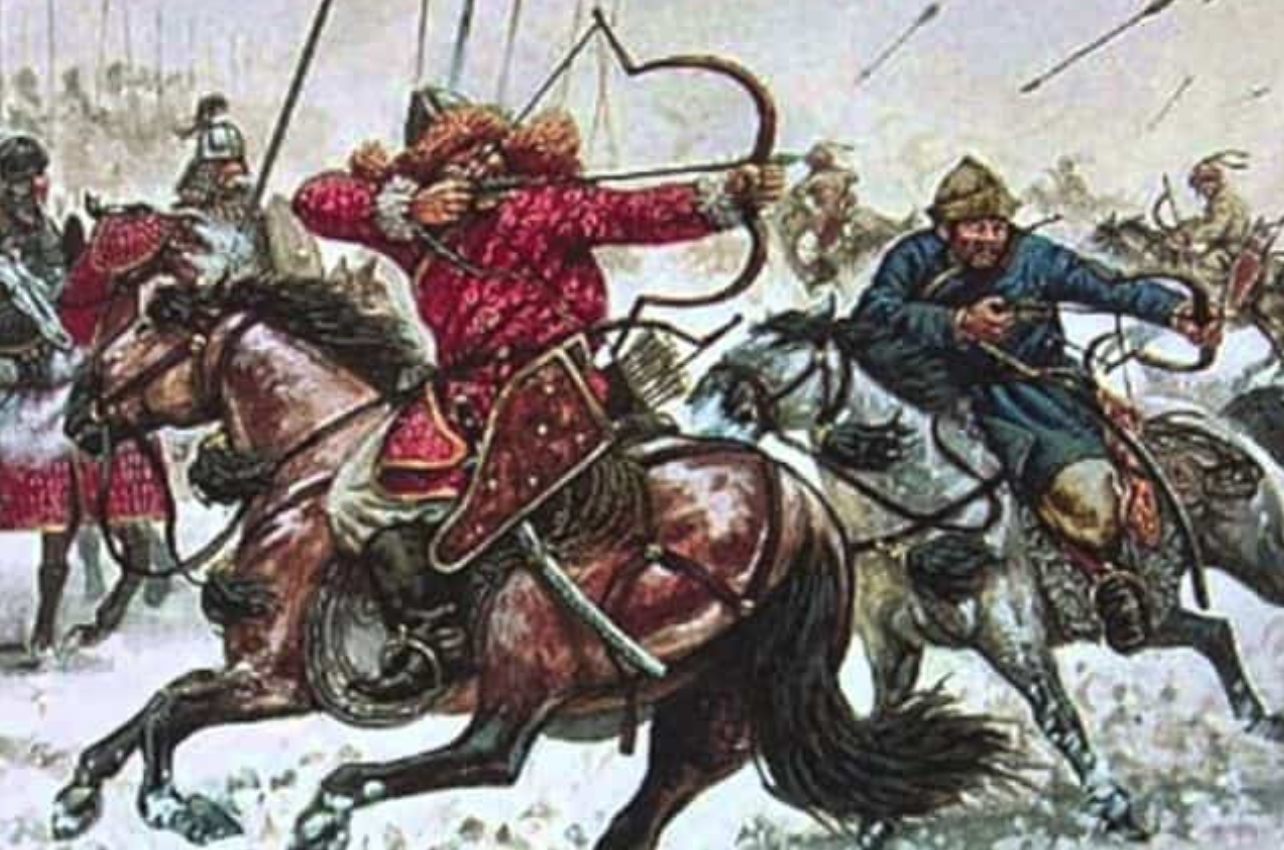
It's worth noting that the two pieces of the typical steppe army's weapon systems reinforce each other. The arrows annoyed and broke up massed formations of infantry, while the use of cavalry prevented the enemy troops from closing the gap. The horse's speed served more than as a spacing mechanism; an arrow fired from a galloping horse has far more penetrating power than an arrow from that same bow from a stationary shooter.
While not a Mongol battle, there are accounts of the Battle of Carrhae - featuring the steppe army of the Parthians against the Roman legion's heavy infantry - where Parthian arrows literally stapled Roman arms to their shields or pinned their sandaled feet to the desert earth. That should give you a good idea of the sort of penetrating power of a steppe-bow fired from horseback.
However, even the Mongols didn't use all horse-archers. The best guesses we have of their military proportions come to around 60% mounted archers and 40% heavy cavalry, fully-kitted cavalry armed with lances, swords and axes atop armored horses, used to ride down and slaughter the troops disorganized and demoralized by arrow fire. The Mardu even have some nice nods to this:
I get that, from a design point of view, you can't have an entire faction in Magic that's all on horseback. That would be hard to do for a lot of reasons, and after all, there is a reason Horsemanship isn't an evergreen mechanic. Wizards of the Coast did what they could to represent the preferred steppe style of fighting while making a collectible card game.
Look carefully at the art below for the card Kill ShotKill Shot. The Mardu aren’t attacking another faction in this picture, like say the frigid Temur or the stolid Abzan. No, the victim in this card is another member of the Mardu horde.
The tribes, while nominally under the control of their Khan Zurgo Helmsmasher, still take the opportunity to settle personal scores or grudges via an arrow to the throat. This brings us to feuding and raiding.
Frank McLynn in his work on Genghis Khan notes: “Nomadic pastoralism on the steppe tends to isolate people and breed mutual incomprehension, so that raiding becomes an intrinsic part of life.”
The Guide to Tarkir states:
“The warriors. The Mardu cannot sustain themselves without war. They have little homeland infrastructure or agriculture to provide food or shelter and are constantly in danger of being unable to survive through the year. And while their warcraft is fearsome, they do little to occupy or hold claim over the lands they conquer. For the Mardu, war is not just a way of life—it is the way of life.
The Guide to Tarkir continues: The Mardu do have agricultural workers, especially shepherds for herd animals and wranglers of war-beasts, and many Mardu craftspeople create fine weapons and armor. But these are not enough to sustain food for the ravenous Mardu armies, and their work must always be supplemented by war plunder. However, the labor classes enjoy a measure of social freedom. As Mardu warriors are almost always involved in skirmishes on multiple fronts, the labor class is generally left on its own, and tends to have more representation in domestic matters than the lower classes of other clans.”
This quote unfortunately conveys a limited understanding of steppe culture. It seems to be calling back to the fragmented tribes and inter-clan conflicts between factions immediately prior to Genghis Khan’s ascension in 1206. There are some scholars who argue this was a uniquely violent (and therefore exceptional) period in history, while others assert that on the steppes at this time, violence was the rule, and peace was the exception to it.
For as long as Temujin, the future Genghis Khan, had been alive, the steppe tribes had been fighting each other. This feuding and raiding had orphaned him at a vulnerable age and devastated his family. The Secret History of the Mongols says of the time before Genghis Khan united the tribes in 1206: “Before you [the sons of the khan] were born the stars turned in the heavens. Everyone was feuding. Rather than sleep they robbed each other of their possessions. The earth and its crust had moved. The whole nation was in rebellion. Rather than rest they fought each other. In such a world one did not live as one wished, but rather in constant conflict. There was no respite, only battle. There was no affection, only mutual slaughter.”
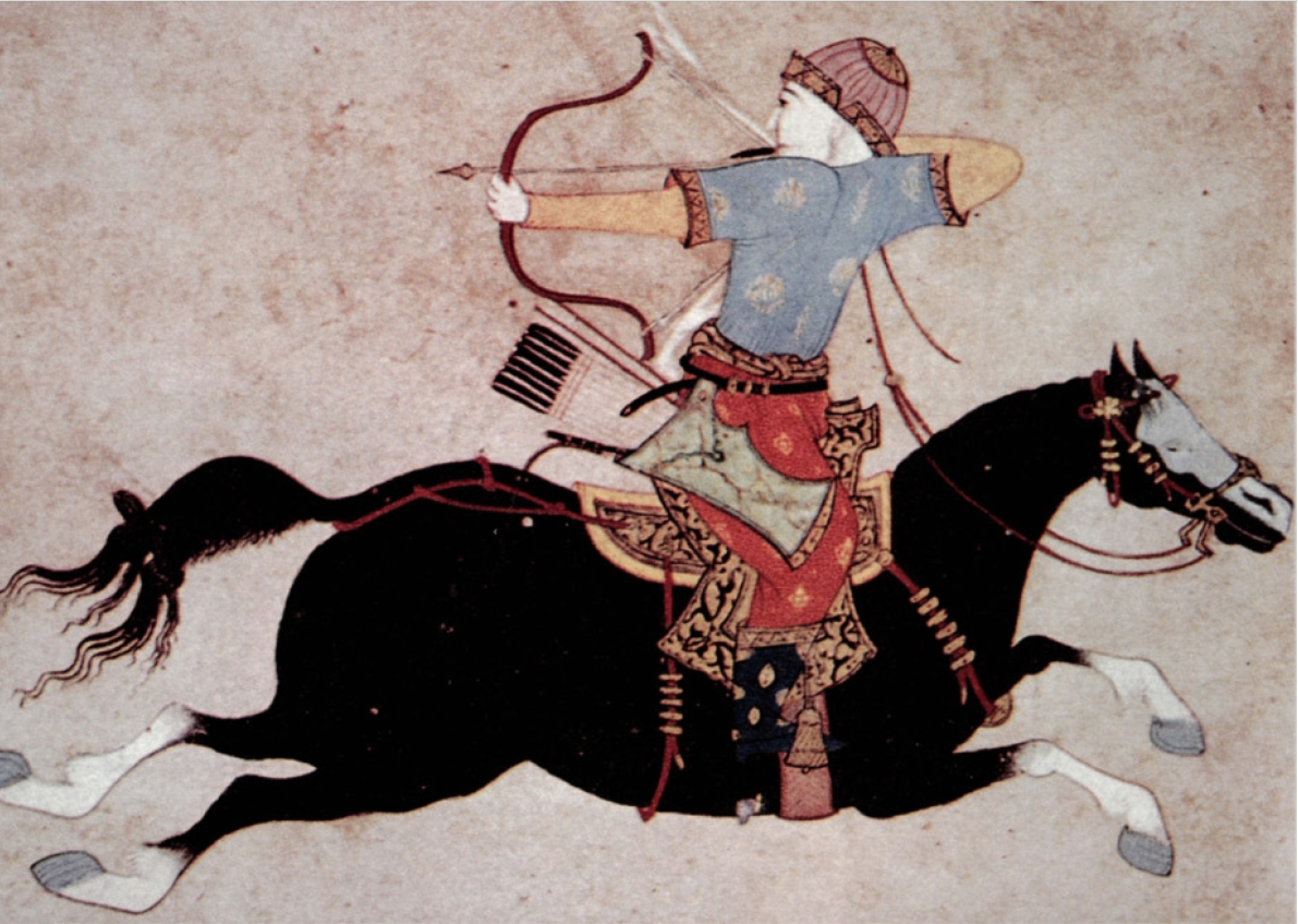
The wars between the tribes to unite the steppes were brutal, long-running, and full of dramatic reverses. However, Temujin ultimately came out on top and united the steppes under his rule in 1206—becoming Genghis Khan—‘oceanic ruler’ or ‘universal ruler’. Ratchnevsky says in the preface to his work: “Genghis Khan was a product of his people and his time. His actions were determined by the brutal law of the steppe, which knew no compassion towards enemies. His activities were not limited to the military field, his successes owed less to his military skills than to his astute policies and organizational abilities.”
In short, having broken all his enemies through battle, banishment, or inter-marriage, Genghis Khan had to create a system that would unify people who until very recently wanted each other dead. He set about to break the power of the steppe aristocracy and create a meritocratic system in its place. For Genghis Khan (R. 1206-1227), unity among squabbling tribes was fostered by his mix of charisma and reformatting steppe society.
In his book The Mongol Empire: Genghis Khan, his heirs and the Founding of Modern China, Mongol historian John Man says: “Genghis’s revolution penetrated right the way through society. Out went tribal regiments; in came regiments that owed loyalty to their commanders. True, some regiments remained tribal; but only if loyalty was assured. Switching regiments became a capital offense; and commanders who failed to measure up could be fired. The whole military and social structure was underpinned by Genghis’s decision to form his own elite bodyguard of 10,000 with special privileges. This was a masterstroke, for the corps included the sons of the regimental commanders who had a rank equal to that of their father; except that in the event of a dispute the son would be preferred over the father. Very clever. Before a commander entertained thoughts of disloyalty he would recall that his son was a hostage to the khan, and that treachery would have to involve the two of them. Personal loyalty and blood ties superseded tribal bonds, weaving a new and enduring social texture, devoted to one purpose: conquest."
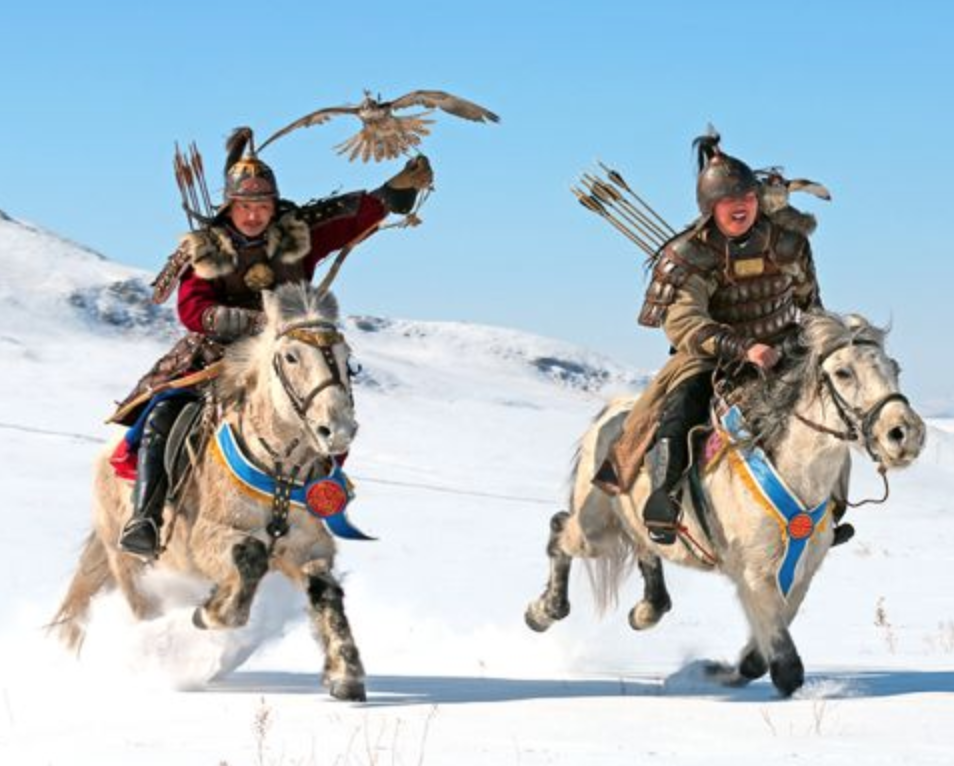
Man continues. "And conquest was vital, for this was not a money economy. Troops could not be paid, except in kind. Power itself bought nothing. once the conquered tribes had been absorbed—the elite killed or ransomed, ordinary men allocated to regiments, young women distributed, the children taken as slaves, the silks, goblets, saddles, bows, horses and herds all shared out—the warriors would look at their leader with new expectations. Old ways had been broken, new ones forged—to be served how exactly? Only by looking to the ultimate source of wealth: the settled lands to the south, beyond the Gobi.”
Genghis Khan - whatever his many other crimes and sins - thought about the long game. He didn't want a flash-in-the-pan empire or a smash-and-grab raid. For good or ill (and there was a lot of ill; the low-end number of the casualties estimated during the Mongol empire is a whopping 10-20 million people) Genghis Khan set out to make a multi-generational Mongol empire, complete with a new national identity, fanatical devotion to an authoritarian system among the rank and file, written records, and adapting settled civilizations technology (like siege engines to defeat walled cities, to name but one of a galaxy of things the Mongols adopted from other cultures).
You cannot say the same of Zurgo Helmsmasher, Khan of the Mardu, who, when it comes down to it, is just an Orc with a sword, not a nation builder or much of an abstract-concepts type of guy. More of a linebacker than a political creature, I think it's fair to say.
No, the khan of the Mardu (or Kolaghan, in the past) who deserves accolades and is a multi-level character is Alesha, Who Smiles at DeathAlesha, Who Smiles at Death. Read more about her killing dragons with the rest of the Mardu and earning her war name here, and witness her making difficult political decisions here, balancing personal pride against the survival of her clan.
Alesha not only rightly receives much love from the Wizards fanbase for being a positive and consequential portrayal of a trans character, but is also painted more sympathetically than Zurgo, as she is willing to compromise when it becomes clear that things aren't going to go her way. One gets the sense that Alesha would have been a skilled negotiator able to run an empire instead of merely expand it. Case in point, she preferred for the Mardu horde to become the Kolaghan horde rather than face extinction. This is the sort of pragmatic thinking that typified Mongolian politics during their empire, although it was usually other people doing the bowing.
Alesha is certainly popular on EDHREC - she's the second most played Mardu commander, with over 2,000 decks under her belt. Let's join in, both to honor her character, and to bring all this history to life!
Cavalry Raid
View on ArchidektCommander (1)
- 1 Alesha, Who Smiles at DeathAlesha, Who Smiles at Death
Creatures (27)
- 1 Blazing Blade AskariBlazing Blade Askari
- 1 Benalish CavalryBenalish Cavalry
- 1 Bogardan LancerBogardan Lancer
- 1 Cadaverous KnightCadaverous Knight
- 1 Cavalry MasterCavalry Master
- 1 Ebony HorseEbony Horse
- 1 Fallen AskariFallen Askari
- 1 Firehoof CavalryFirehoof Cavalry
- 1 Flamerush RiderFlamerush Rider
- 1 Jeering InstigatorJeering Instigator
- 1 Hero of Oxid RidgeHero of Oxid Ridge
- 1 Riftmarked KnightRiftmarked Knight
- 1 Searing Spear AskariSearing Spear Askari
- 1 Shadow RiderShadow Rider
- 1 Suq'Ata LancerSuq'Ata Lancer
- 1 Telim'TorTelim'Tor
- 1 Timely HordemateTimely Hordemate
- 1 Midnight ReaperMidnight Reaper
- 1 Mardu Heart-PiercerMardu Heart-Piercer
- 1 Mardu RoughriderMardu Roughrider
- 1 Mounted ArchersMounted Archers
- 1 Mtenda HerderMtenda Herder
- 1 Varchild, Betrayer of KjeldorVarchild, Betrayer of Kjeldor
- 1 Varchild's War-RidersVarchild's War-Riders
- 1 Stun SniperStun Sniper
- 1 Valley DasherValley Dasher
- 1 Wingmate RocWingmate Roc
Artifacts (8)
- 1 Akroma's MemorialAkroma's Memorial
- 1 HankyuHankyu
- 1 Jabari's BannerJabari's Banner
- 1 Heart-Piercer BowHeart-Piercer Bow
- 1 Serrated ArrowsSerrated Arrows
- 1 Sol RingSol Ring
- 1 Mardu BannerMardu Banner
- 1 Dolmen GateDolmen Gate
Sorceries (5)
- 1 Arrow StormArrow Storm
- 1 End HostilitiesEnd Hostilities
- 1 Howl of the HordeHowl of the Horde
- 1 Savage BeatingSavage Beating
- 1 Living DeathLiving Death
Instants (9)
- 1 Avenging ArrowAvenging Arrow
- 1 Crackling DoomCrackling Doom
- 1 Friendly FireFriendly Fire
- 1 Kill ShotKill Shot
- 1 Kolaghan's CommandKolaghan's Command
- 1 Twin BoltTwin Bolt
- 1 Mardu CharmMardu Charm
- 1 Lightning HelixLightning Helix
- 1 Comet StormComet Storm
Enchantments (7)
- 1 AgilityAgility
- 1 Berserkers' OnslaughtBerserkers' Onslaught
- 1 FervorFervor
- 1 SerraSerra
- 1 Mardu RunemarkMardu Runemark
- 1 Break Through the LineBreak Through the Line
- 1 ReconnaissanceReconnaissance
Lands (40)
- 10 SwampSwamp
- 10 PlainsPlains
- 10 MountainMountain
- 1 Nomad OutpostNomad Outpost
- 1 Terramorphic ExpanseTerramorphic Expanse
- 1 Evolving WildsEvolving Wilds
- 1 Bloodfell CavesBloodfell Caves
- 1 Isolated ChapelIsolated Chapel
- 1 Caves of KoilosCaves of Koilos
- 1 Sulfurous SpringsSulfurous Springs
- 1 Boros GuildgateBoros Guildgate
- 1 Rakdos GuildgateRakdos Guildgate
- 1 Orzhov GuildgateOrzhov Guildgate
Works Cited:
Man, John. The Mongol Empire: Genghis Khan, his heirs and the Founding of Modern China. Penguin Randomhouse 2014.
Ratchnevsky, Paul (Translated and edited by Thomas Nivison Haining. Genghis Khan: his Life and Legacy. Blackwell Press 1991.
McLynn, Frank. Genghis Khan His Conquests, his Empire, his Legacy. Da Capo Press, 2015.
"The Truth of Names." Wizards of the Coast website, 2015 (https://magic.wizards.com/en/articles/archive/magic-story/truth-names-2015-01-28)
Digges, Kelly. "Khanfall." Wizards of the Coast website, 2015. (https://magic.wizards.com/en/articles/archive/magic-story/khanfall-2015-02-18)
No single author credited."The Planeswalker's Guide to Tarkir." Wizards of the Coast website, 2014. (https://magic.wizards.com/en/articles/archive/planeswalkers-guide-khans-tarkir-part-2-2014-09-10)
Goldstein, Rich. "Alesha who Smiles at Death: the story behind Magic: the Gathering's first trans-character." https://www.thedailybeast.com/alesha-who-smiles-at-death-the-story-behind-magic-the-gatherings-first-trans-character Daily Beast website, 2015
Charles Allison
I'm from just north of hell, I was schooled in a blossoming backwater, and currently am the worst living bureaucrat since Franz Kafka breathed his last, tremulous breath. I’ve been playing Magic: The Gathering since middle school, and Commander in particular since college, putting about a decade of experience brewing, scheming and fuming over historical travesties under my belt. I get dizzy walking in straight lines. I recently received my MFA from Arcadia University's creative writing program. My work has previously appeared in Podcastle, Stonecoast Review, Devilfish Review and Bride of Chaos.
Your opinions are welcome. We love hearing what you think about Magic! We ask that you are always respectful when commenting. Please keep in mind how your comments could be interpreted by others. Personal attacks on our writers or other commenters will not be tolerated. Your comments may be removed if your language could be interpreted as aggressive or disrespectful. You may also be banned from writing further comments.
